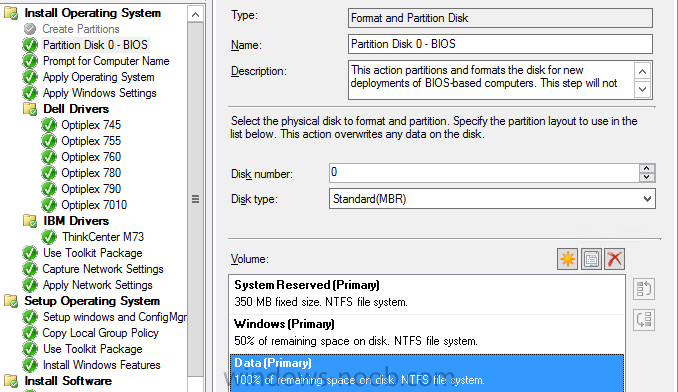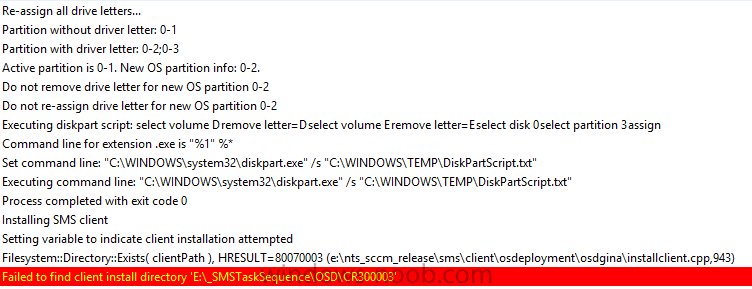Search the Community
Showing results for tags 'partition'.
-
Secondart Partition and Drive Letter Assignment
Epitome posted a topic in Configuration Manager 2012
Hi guys, After developing my OSD process for my work and creating all my WIMs, the IT manager decided that it would be better for us to install the SCCM client and cache into a secondary partition in a hidden folder. Reason for this is we use DeepFreeze and the cache/config is getting wiped at... -
Hey everyone, I'm working on a way to create a more mobile OSD task sequence, and for my environment..I have it working exactly how I need it to...but I'm wanting to tweak it a bit. I need some help though. I work in education, and we have 2-3000 laptops throughout our district. I have a t...
- 1 reply
-
- task sequence
- sccm
-
(and 3 more)
Tagged with:
-
I'm looking for a method which would allow the techies to change the Partition Schemes based on Data size, number of Physical Drives as part of an OSD Task Sequence. Is this possible through the use of HTA's? Thanks
-
Virtualize Win8.1: BIOS + MBR Physical Partition > to > WIM Image > to > UEFI GPT VHD Virtualizing Win8.1 from BIOS + MBR Physical Partition > to > .WIM Image > to > UEFI GPT .VHD Sometime last year I found out about Native boot VHDs and tried to go that way for good. There were some issues...
- 3 replies
-
- biosmbrwimimagegpt
- uefi
- (and 4 more)
-
What is Significance of MSR, SYS, EFI partitions for Win 8.1 Native Boot VHD? How? I ask because I've built and native booted several variations of Win 8.1 VHDs on target SPro 3. I'd like to know pros & cons. CONTEXT: So, with a lot of help and input from multiple amazing people from multiple for...
-
Greetings All, I am having a bit of trouble creating a TS that creates two partitions. If I only have one it works perfectly as soon as I try and add the second the TS fails. I can see what is causing the failure but i don't know why. Let me know if any other info is needed. Desired Outcome:...
- 10 replies
-
- Configuration Manager
- 2012
-
(and 5 more)
Tagged with:



